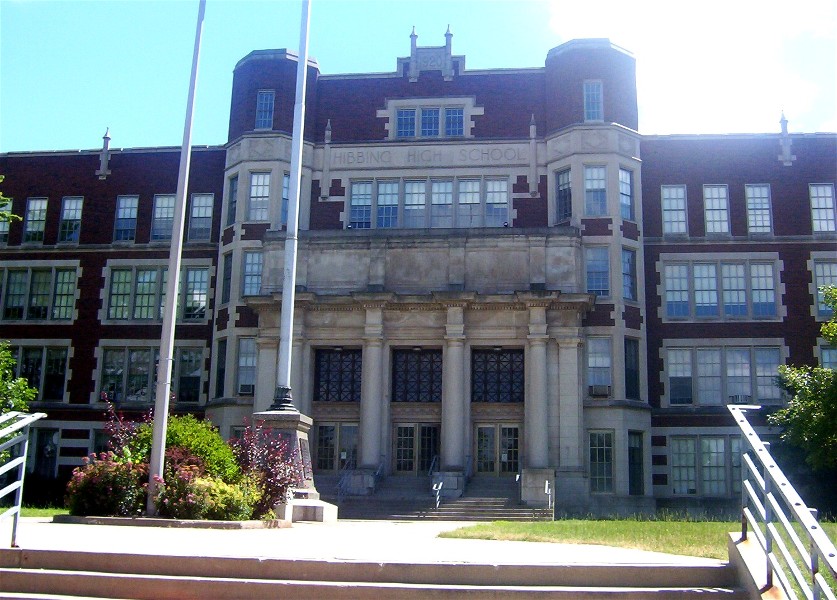Text and Photos by Henrylito D. Tacio
Mention Hibbing to any Filipinos, and he will ask you: “Where is that? What is the city famous for?” The answer, my friend, is blowing in the wind.
Remember that song again? It goes this way: “How many roads must a man walk down before you call him a man? How many seas must a white dove sail before she sleeps in the sand? How many times must the cannon balls fly before they’re forever banned?”
Are you now singing? Bob Dylan, who popularized the song, also wrote the lyrics. Although Robert Zimmerman (that was his original name before he changed it to Bob Dylan after poet Dylan Thomas) was born in Duluth (the third-largest city in Minnesota, after Minneapolis and Saint Paul), he spent his childhood years in Hibbing (from age 7 10 18).
Bob Dylan is one of the city’s claims to fame. Many people come to see the house where Dylan grew up in. In May 1991, the city’s library started the Bob Dylan Collection. “No one finds themselves in Hibbing by accident,” says one visitor. “You have to aim for the city where Bob Dylan grew up to end up here.”
Dylan, however, is not the only famous person associated with Hibbing. To name more: non-fiction author Steve Deger, professional basketball player Kevin McHale, authors Gerald Kearney and Bethany McLean, John Sheehy (one of the designers for Chicago’s 100-story John Hancock Center), and Gus Hall (four-time American presidential candidate).
Ask anyone in Hibbing, and they’ll tell you that the city has plenty of history. Hibbing was incorporated in 1893; it was then known as the “richest village in the world” as it was the largest of the many mining towns on the iron-ore-rich Mesabi Range. It was named in honor of Frank Hibbing, its founder. Born in Germany in 1857, he came to the United States with his parents when he was still a little boy.
My sister Elena came to the United States in 1988 and lived in Hibbing, where her husband worked in a mining company. When she visited us in 1989, she brought some T-shirts as pasalubong. What stuck to my mind were the words: “Hibbing, the world’s largest open pit mine.”
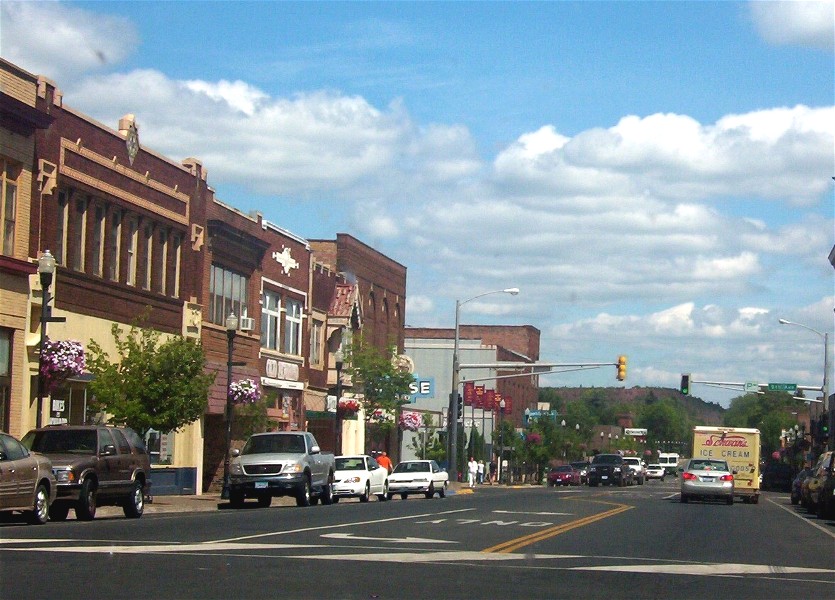
I didn’t ask my sister then. It was not until I visited her in December of 2000 that my curiosity was finally answered. During that visit, I found out that Hibbing has the world’s largest opencast iron-ore workings. The Hull-Rust-Mahoning Mine ushered in the development of strip mining technology. In its peak production years during World Wars I and II, the mine supplied as much as one-fourth of all the iron ore mined in the United States.
History records stated that the area of the Mesabi Iron Range was explored in 1893-94, shortly after the first Mesabi ore was shipped from the nearby Mountain Iron Mine in 1892. Early underground mining at Hull-Rust-Mahoning soon gave way to strip mining, a process better suited to the soft, shallow ore deposits of the Mesabi. As the mines grew, the many open pits gradually merged into one, and the area came to be known as the “Man-made Grand Canyon of the North.” Mine consolidation led in 1901 to the formation of U.S. Steel, then the world’s largest corporation.
Since it was wintertime, I wasn’t able to visit the mining pit. When I returned recently, my sister brought me to the place (her family has moved to nearby Grand Rapids, the city where Judy Garland was born). Although most of the mines (about 30 of them, which were opened between 1895 and 1957) are no longer in operation, a substantial amount of ore continues to be extracted from the pit by Hibbing Taconite Company. The vast pit yawns more than three miles long, up to two miles wide and 600 feet deep.
If history is your thing, don’t miss visiting the Hibbing Historical Museum. The many types of exhibits tell the story of Hibbing. Ancient tools — accompanied by pictorial displays which showed how these tools were used in logging and mining. There is also a 5 foot by 8 foot model of Hibbing as it looked at the time of its incorporation in 1893. An 8 foot by16 foot 1913 model of North Hibbing depicts the growth of the city and illustrates why Hibbing was forced to move to accommodate the mining companies discovery of rich iron ore deposits that lay beneath the city.
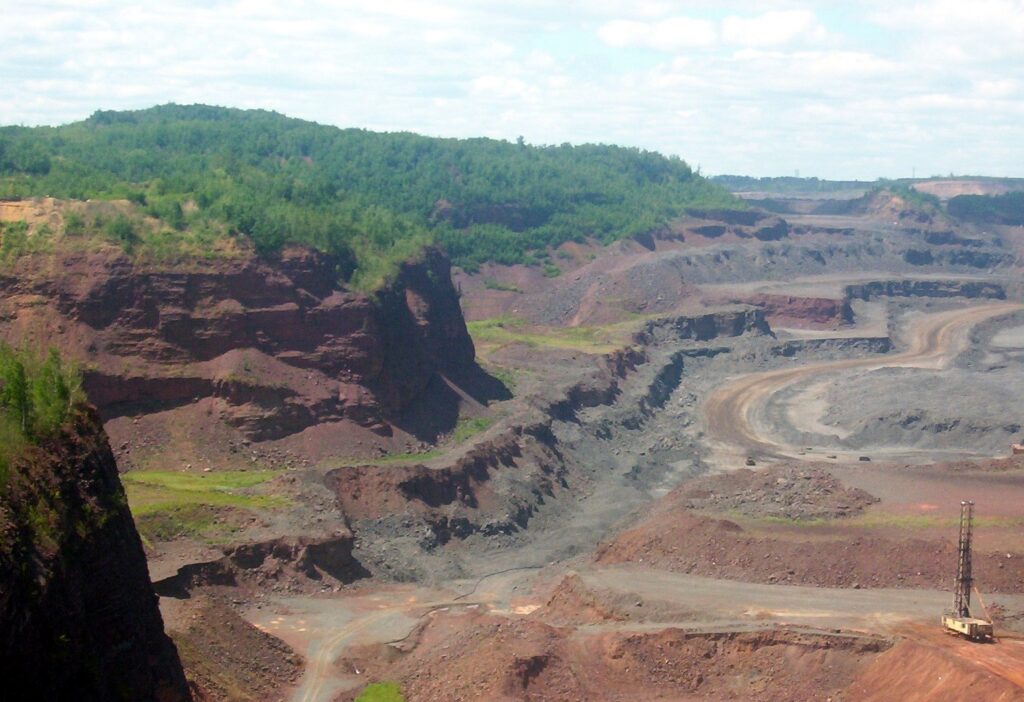
Yes, you read it right. The present location of the city was not its former site. The move started in 1919, and the first phase was completed in 1921. North Hibbing remained as a business and residential center through the 1930s when the mining companies bought the remaining structures. The last house was moved in 1968
More historical fact: Hibbing is also recognized as the birthplace of the bus industry in the United States. It sprang from the business acumen of Carl Wickman and Andrew Anderson – who opened the first bus line (with one bus) between the towns of Hibbing and Alice in 1914. They figured the region’s iron miners would make the right mass transit customers. It was – and the bus line grew to become Greyhound (the fastest breed of dog used in dog racing).
Although Greyhound Bus is now headquartered in Dallas, Texas, the Greyhound Bus Museum is located in Hibbing. Inside the museum, you get to know the history of the bus industry from its humble beginnings using pictorial displays, hundreds of artifacts and memorabilia, audio-visual presentation, and a VCR show of The Greyhound Story – from Hibbing to Everywhere.
My sister and her family used to live near the Hibbing High School, another must-see. The construction of this historic school was started in 1920. The cost of the building was roughly $3,900,000. Today, it would cost over $50 million to replace. The building is made up of red brick trimmed with Bedford stone and is arranged in the shape of the letter E. It was built to replace the old high school, which had to be torn down because of the encroaching mining operations.
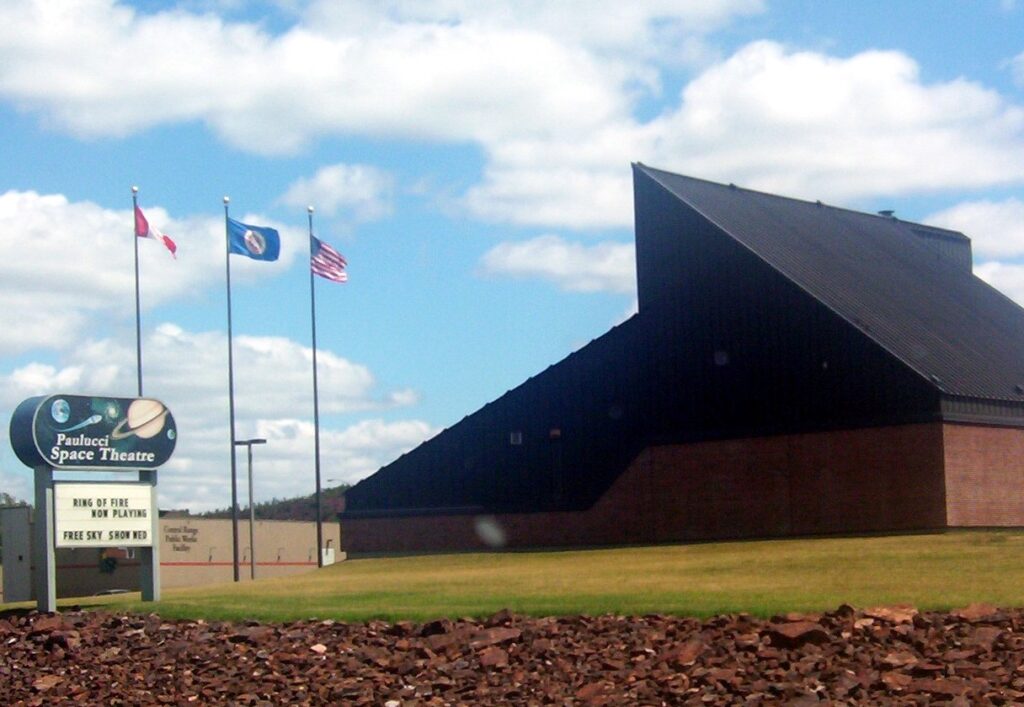
Paulucci Space Theatre 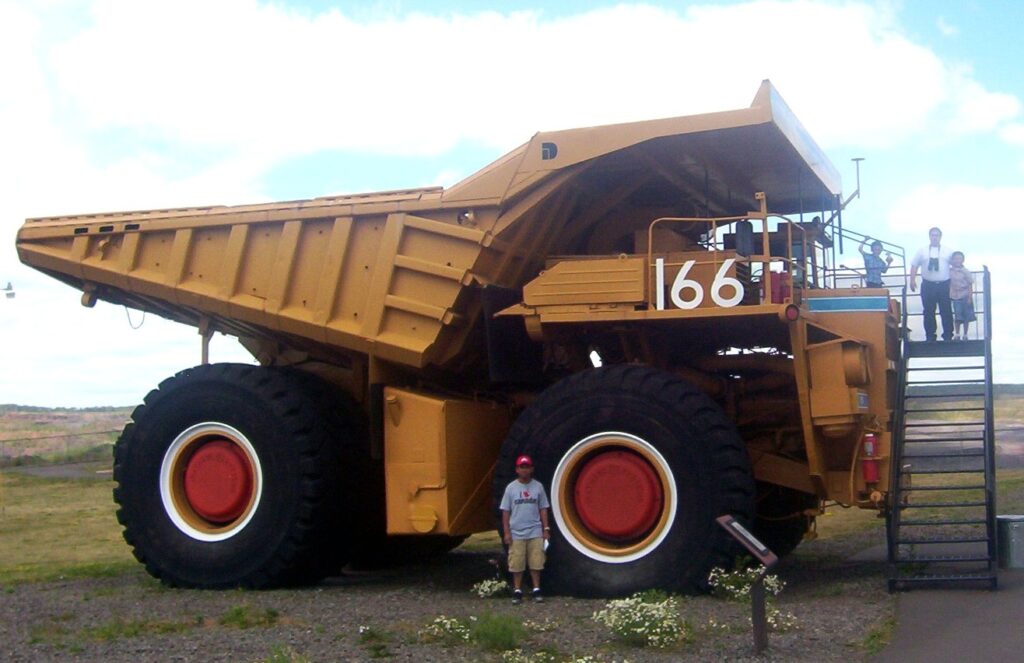
The iron ore carrier
As you walk into the Hibbing High School’s main entrance, you are greeted by two sets of three mural panels. One set to your left and right. David Ericson, a Duluth painter, painted the six murals in 1924. The murals on the West wall trace the history of Minnesota. The first mural is of Minnesota’s fur trading roots as a territory. The second is its recognition as a state. And the third is Minnesota’s first major industry, logging. On the East wall, the mural set traces United States’ History. The first mural shows Columbus discovering America. The second is the signing of the Declaration of Independence. And the third depicts westward expansion. The Smithsonian recognizes these murals as national treasures.
The school is also noted for its auditorium, which was modeled after The Capitol Theater in New York City. Between the main floor and the balcony, it seats up to 1,805. A twenty-foot by the forty-foot proscenium arch, whose borders are marked by massive pillars, frames the stage. Artist Carl Hardolf A. Parson painted four female figures, representing music, art, drama, and literature. The muses of the arts preside over the auditorium from high upon its walls. Greek urns with flowering acanthus leaves and swags, all surrounding multi-colored Sheraton medallions, decorate an “Adam” style ceiling. The ceiling makes a perfect backdrop for the four giant solid glass chandeliers. The chandeliers were installed in 1924 to the tune of $4,000 apiece. Each main chandelier stretches seven feet across and weighs nearly six hundred pounds.
As we left the city, I could hear Bob Dylan singing: “I could stay with you forever and never realize the time.”

